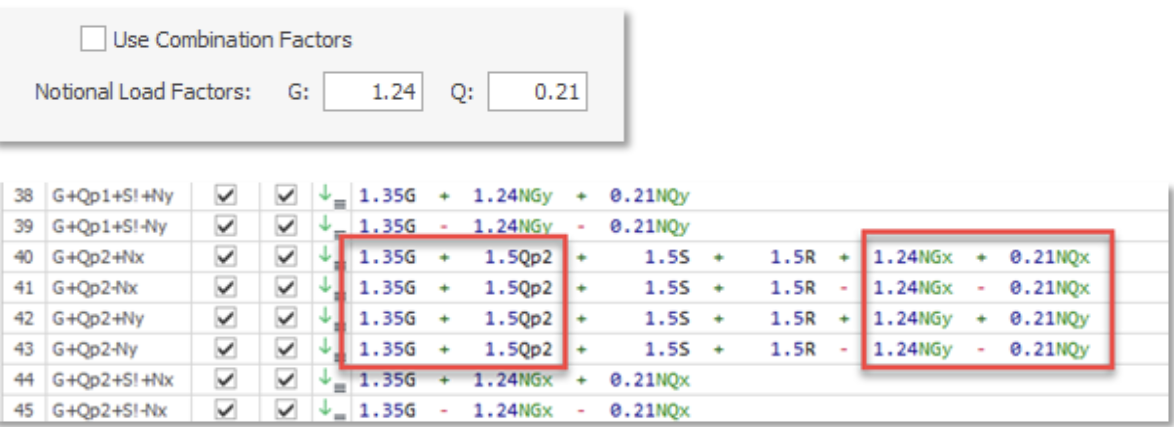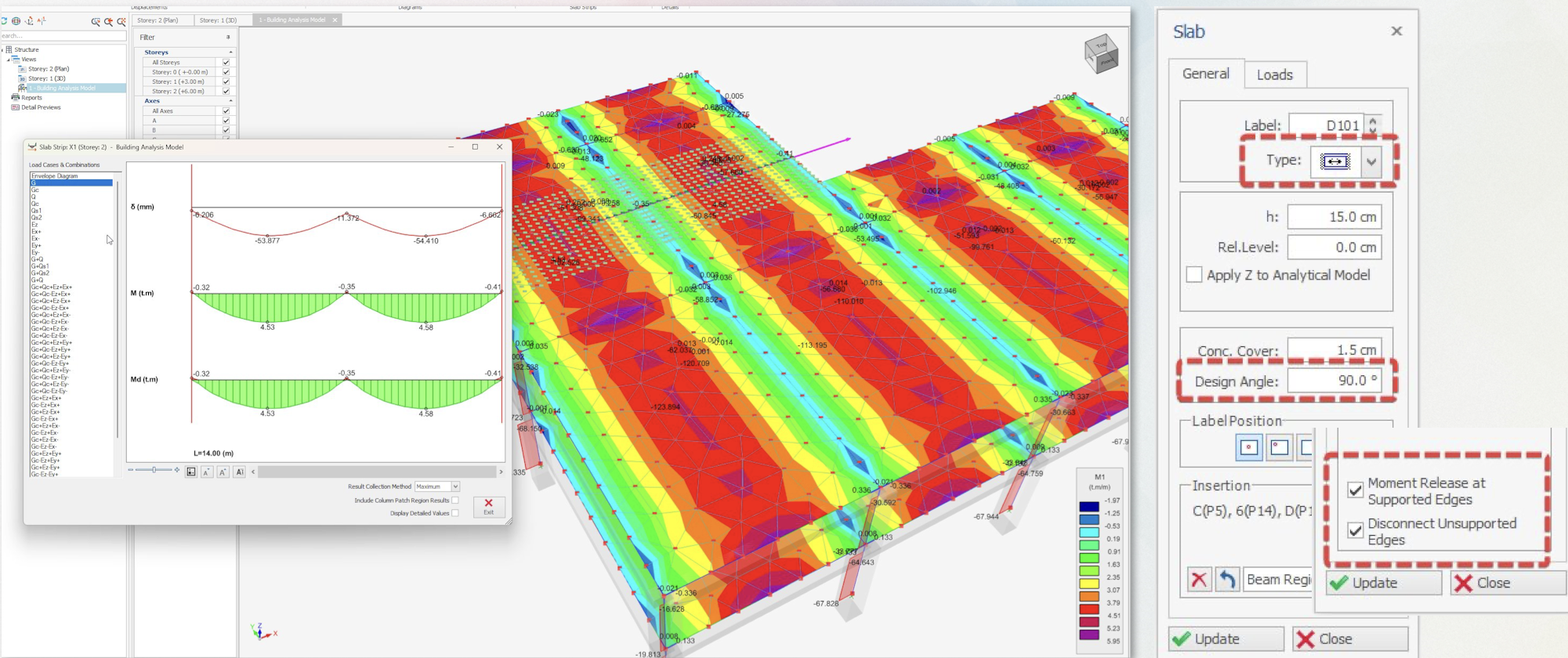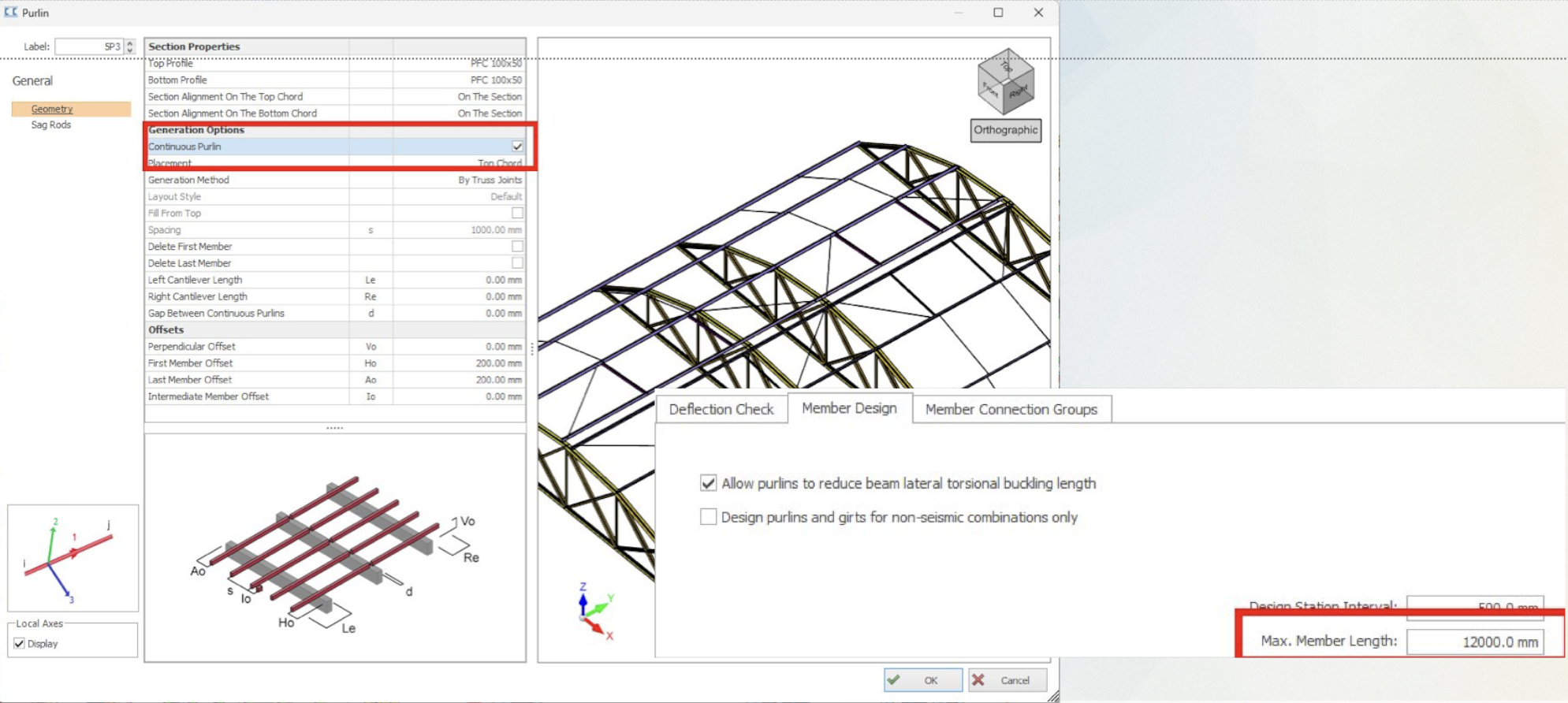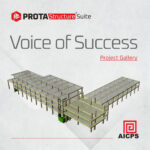
ProtaStructure 2025: Transformative Design Improvements in Structural Engineering
Structural engineering demands precision, adaptability, and innovation. ProtaStructure 2025 introduces groundbreaking design improvements that significantly enhance the engineer’s toolkit. These advancements boost design efficiency, improve calculation accuracy, and offer robust solutions to various structural challenges. This discussion explores the key features of ProtaStructure 2025, such as Notional Load Combinations, One-Way Slabs with Orthotropic Shell Elements, Castellated Beam Design, Non-Seismic Purlin/Girt Design, and enhanced Manual Slab Strips in Slab Design Reports.**
Notional Load Combinations: Flexible Lateral Loads for Any Region

ProtaStructure 2025 offers a flexible approach to Notional Load Combinations, which engineers can apply across regions. This feature adapts to local design codes seamlessly. In regions where lateral loads are not predominant, notional loads serve as essential minimum forces at specific story heights. Typically, these loads are fractions of the dead and live loads. However, their values can vary based on design codes.
ProtaStructure 2025 simplifies this process. Engineers can apply notional loads to any combination type for each load case coefficient. This flexibility ensures compliance with intricate code provisions. Moreover, these loads help manage geometric irregularities within a structure. Engineers can integrate them into specific combinations, accounting for anticipated imperfections. Selecting the “Add Notional Loads Combinations for Geometric Imperfections” option allows engineers to apply these loads to RC Combinations, Steel Combinations, or both.
The platform also allows for further customization. Engineers can select combination factors and input bespoke load factors. This control proves beneficial when designing in areas with unique load demands. Every structural element meets the necessary requirements.
One-Way Slabs with Orthotropic Shell Elements: Enhanced Finite Element Modeling

Finite Element Modeling (FEM) is crucial in modern structural analysis. ProtaStructure 2025 enhances FEM for one-way slabs. Traditionally, isotropic slabs exhibit two-way behavior in FEM, which works for cast-in-place reinforced concrete slabs. However, one-way slabs like precast, pre-tensioned, or hollow core slabs require different treatment.
ProtaStructure 2025 improves FEM by integrating Orthotropic Shell Elements. These elements have lower Modulus of Elasticity, Modulus of Shear, and a reduced Reciprocal Compression Ratio in the perpendicular direction. This enhancement allows engineers to model one-way slabs more accurately.
Additionally, ProtaStructure 2025 allows engineers to apply end releases to one-way slabs. This feature is useful when slabs are restrained without moment connections or where non-load transferring edges lack support. Engineers can achieve a realistic representation of slab behavior under actual conditions by releasing moments at supported edges.
Castellated Beam Design: Expanding Structural Capabilities
ProtaStructure 2025 fully incorporates the design and analysis of Castellated Beams. These beams, characterized by openings in the web, increase the beam’s depth without adding extra weight. Engineers favor castellated beams for their structural efficiency and aesthetic appeal.
With the new updates, engineers can now model, analyze, design, and detail castellated beams directly within ProtaStructure. This capability streamlines the design process, making it more efficient and integrated. Moreover, ProtaStructure 2025 includes a comprehensive design guide for castellated beams. The guide offers clear explanations and practical instructions, helping engineers maximize this feature in their projects.
Non-Seismic Purlin/Girt Design: Targeted Structural Adjustments

ProtaStructure 2025 introduces a feature that enables engineers to design Purlins and Girts specifically for non-seismic combinations. These structural elements, often found in roof and wall systems, typically do not require seismic evaluations in low seismic activity regions. ProtaStructure 2025 simplifies the design process by excluding seismic loads from the design of purlins and girts.
Engineers can easily access this feature through the Toolbox. Navigate to Settings > Steel Settings > Member Design. By focusing on relevant load cases, engineers simplify the design process, making it more efficient and tailored to specific project needs.
Manual Slab Strips in Slab Design Reports: Enhanced Documentation

Accurate documentation is critical in structural engineering. ProtaStructure 2025 enhances this process by introducing Manual Slab Strips in Slab Design Reports. Previous software versions did not include manually placed slab rebars in design reports. ProtaStructure 2025 now allows engineers to include these manual adjustments, improving the completeness of design submissions.
This feature is important when fine-tuning specific slab areas, such as reinforcing a particular section. By incorporating these details into the design report, ProtaStructure 2025 improves communication among design teams, contractors, and clients. Every aspect of the design is documented and understood.
Conclusion
ProtaStructure 2025 represents a significant evolution in structural design software. The new features enhance flexibility, precision, and efficiency. Engineers working with Notional Load Combinations, modeling One-Way Slabs with Orthotropic Shell Elements, or designing Castellated Beams and Non-Seismic Purlins find this tool indispensable.
These updates simplify the design process while ensuring projects meet functional requirements. ProtaStructure 2025 stands out as an essential tool for modern structural engineering. Engineers interested in exploring these features further can find comprehensive guidance in the ProtaStructure 2025 Design Guide.
For more detailed documentation please visit Prota Help Center!







